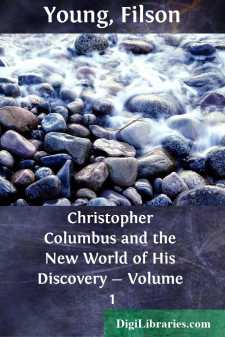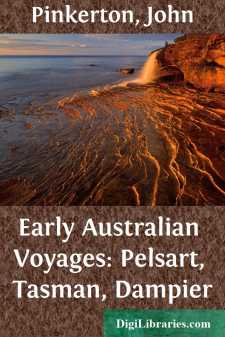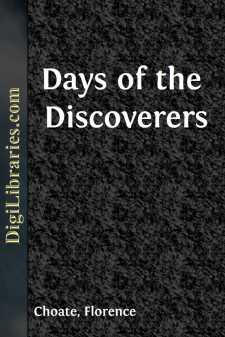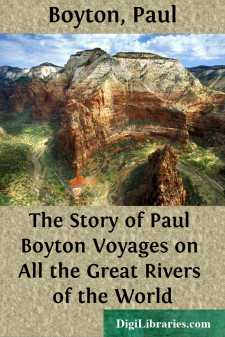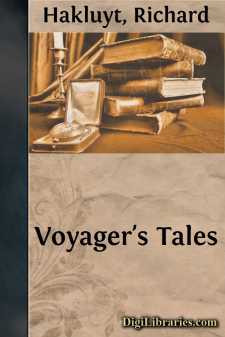History
- Africa 30
- Americas (North Central South West Indies) 50
- Ancient 68
- Asia 58
- Australia & New Zealand 8
- Canada 41
- Caribbean & West Indies 1
- Civilization 20
- Eastern Europe 12
- Europe 310
- Expeditions & Discoveries
- General 77
- Historical Geography 1
- Jewish 9
- Latin America 3
- Medieval 8
- Middle East 13
- Military 248
- Revolutionary 8
- Study & Teaching 5
- United States 353
- Western Europe 56
- World 13
Expeditions & Discoveries Books
Sort by:
CHAPTER I WHICH WAY? When you have noticed a fly crawling on a ball or an orange has it ever occurred to you how a man would look crawling about on the earth if seen from a great height? Our world is, as everyone knows, like an orange in shape, only it is very much larger in comparison with us than an orange is in regard to a fly. In fact, to make a reasonable comparison, we should have to picture the...
more...
THE ISLE OF PINES The scene opens in Cambridge, Massachusetts, in the year 1668, where in one of the college buildings a contest between two rival printers had been waged for some years. Marmaduke Johnson, a trained and experienced printer, to whose ability the Indian Bible is largely due, had ceased to be the printer of the corporation, or Society for the Propagation of the Gospel in New England, but...
more...
by:
Filson Young
The writing of historical biography is properly a work of partnership, to which public credit is awarded too often in an inverse proportion to the labours expended. One group of historians, labouring in the obscurest depths, dig and prepare the ground, searching and sifting the documentary soil with infinite labour and over an area immensely wide. They are followed by those scholars and specialists in...
more...
There is no one of the Pioneers of this continent whose achievements equal those of the Chevalier Robert de la Salle. He passed over thousands of miles of lakes and rivers in the birch canoe. He traversed countless leagues of prairie and forest, on foot, guided by the moccasined Indian, threading trails which the white man's foot had never trod, and penetrating the villages and the wigwams of...
more...
by:
John Gierlow
INTRODUCTION. Lewis Holberg, the author of the Narrative of Niels Klim, was the most eminent writer among the Danes in the eighteenth century. His works show a surprising versatility of genius, comprising Histories and Treatises on Jurisprudence, together with Satires and Comedies. He was by birth a Norwegian, but was educated at the University at Copenhagen in Denmark. Soon after receiving a...
more...
by:
John Pinkerton
In the days of Plato, imagination found its way, before the mariners, to a new world across the Atlantic, and fabled an Atlantis where America now stands. In the days of Francis Bacon, imagination of the English found its way to the great Southern Continent before the Portuguese or Dutch sailors had sight of it, and it was the home of those wise students of God and nature to whom Bacon gave his New...
more...
by:
Walter Raleigh
INTRODUCTORY NOTE Sir Walter Raleigh may be taken as the great typical figure of the age of Elizabeth. Courtier and statesman, soldier and sailor, scientist and man of letters, he engaged in almost all the main lines of public activity in his time, and was distinguished in them all. His father was a Devonshire gentleman of property, connected with many of the distinguished families of the south of...
more...
by:
Florence Choate
TO FORESTAUpon the road to Faerie,O there are many sights to see,—Small woodland folk may one discernHousekeeping under leaf and fern,And little tunnels in the grassWhere caravans of goblins pass,And airy corsair-craft that floatOn wings transparent as a mote,—All sorts of curious things can beUpon the road to Faerie!Along the wharves of Faerie—There all the winds of ChristendieAre musical with...
more...
by:
Paul Boyton
CHAPTER I. One bright day in July, 1858, two women carrying well filled market baskets, were crossing the old Hand Street bridge that spans the Alleghany River between Pittsburgh and Alleghany City, Penn. "Oh, Mrs. Boyton, do look at that child in the middle of the river paddling around on a board." "Well," said the one addressed as Mrs. Boyton, "I'm glad it is none of mine. My...
more...
by:
Richard Hakluyt
Richard Hakluyt, notwithstanding the Dutch look of his name, was of a good British stock, from Wales or the Welsh borders. At the beginning of the fourteenth century an ancestor of his, Hugo Hakelute, sat in Parliament as member for Leominster. Richard Hakluyt, born about five years before the accession of Queen Elizabeth, was a boy at Westminster School, when visits to a cousin in the Middle Temple,...
more...




